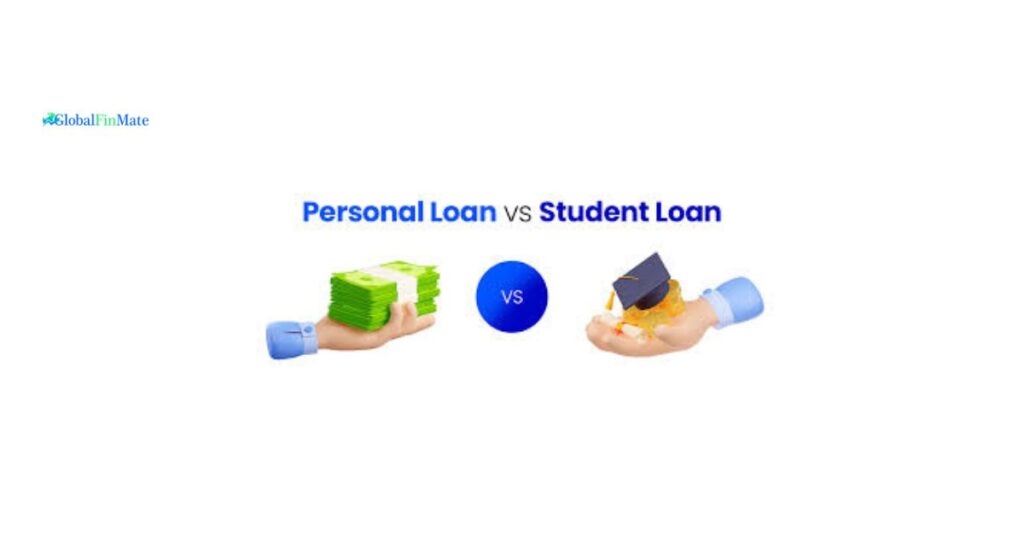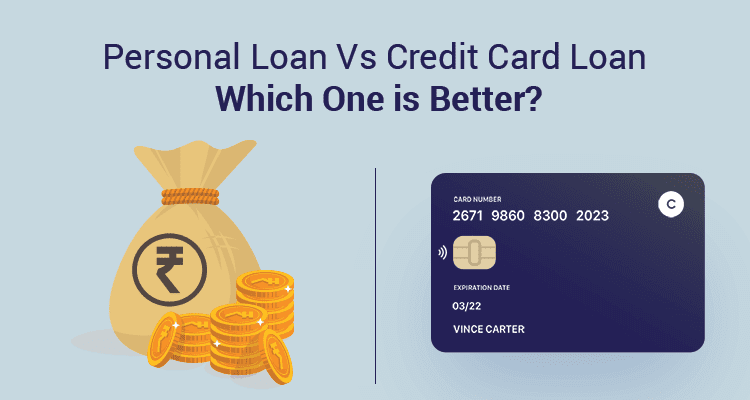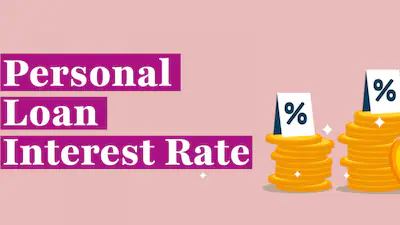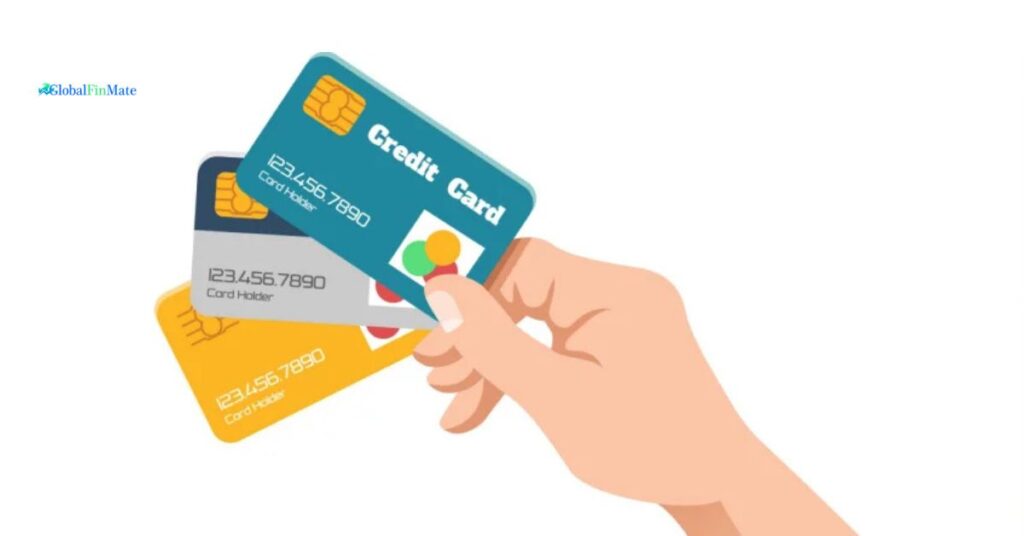Personal Loan vs Student Loan: GlobalFinMate
Loans are a common part of modern financial planning, helping people fund dreams and manage unexpected expenses. Whether it’s pursuing higher education, handling emergencies, or covering lifestyle costs, borrowing can provide the necessary financial support. Among the many loan types available, personal loans and student loans are two that often overlap in purpose yet differ greatly in structure.
At first glance, both loans provide access to money. However, the conditions attached to each type—including repayment timelines, interest rates, and eligibility—make them suitable for very different needs. Choosing between them is not just about getting quick cash; it’s about selecting the right financial product that aligns with your goals and repayment ability.
In this guide, we’ll explore personal loans vs student loans in detail, compare their features, examine their pros and cons, and help you understand which option fits best depending on your situation.
What is a Personal Loan?
A personal loan is one of the most flexible borrowing options available to individuals. It is typically an unsecured loan, which means you don’t need to pledge assets such as property or gold as collateral. The lender bases approval largely on your income, employment status, and credit history.
Key Features of Personal Loans
- Flexibility in usage: Borrowers can use the money for anything—from travel and weddings to education or debt repayment. There are no restrictions imposed by the lender.
- Unsecured nature: Since no collateral is required, the loan relies heavily on your creditworthiness.
- Repayment tenure: Usually between 1 and 7 years, which means you can close the loan relatively quickly.
- Fixed interest rates: EMIs remain the same throughout the repayment period, making budgeting easier.
- Quick approval process: Depending on your profile, approval and disbursement can take just a few hours to a few days.
Common Purposes of Personal Loans
Personal loans are versatile and commonly used for:
- Emergency medical treatments
- Travel or holidays
- Weddings and family events
- Home repairs or renovations
- Education (where student loans are not available)
- Debt consolidation to manage multiple loans more easily
Eligibility Requirements for Personal Loans
To qualify for a personal loan, you typically need to meet:
- Age criteria: Between 21–60 years in most cases
- Income proof: Salary slips, tax returns, or business income statements
- Employment stability: Usually at least 6–12 months of continuous employment
- Credit score: A score above 650–700 improves your chances of approval and getting better interest rates
In short, personal loans are designed for individuals who need fast, flexible financial assistance without the limitations of usage. However, this convenience comes at a cost in the form of higher interest rates and stricter repayment timelines.
What is a Student Loan?
A student loan, sometimes called an education loan, is a financial product tailored specifically to cover educational expenses. Unlike personal loans, which can be used for anything, student loans are restricted to academic purposes such as tuition fees, books, equipment, living expenses, or travel if studying abroad.
Key Features of Student Loans
- Education-specific: The loan amount is disbursed directly to the educational institution in many cases, ensuring it is used for academic purposes.
- Lower interest rates: Governments and financial institutions often keep student loan rates lower, viewing education as a long-term investment.
- Grace period or moratorium: Repayment usually begins only after completion of the course, giving students time to find employment before repaying.
- Longer repayment tenure: Student loans often extend up to 10–20 years, making monthly installments smaller and manageable.
- Collateral and guarantor requirements: For large loan amounts, especially for overseas education, collateral (like property) or a co-applicant (like a parent) may be required.
Typical Borrowers of Student Loans
- High school graduates pursuing undergraduate courses
- College students pursuing postgraduate degrees
- Students seeking to study abroad for specialized programs
- Families supporting children’s higher education
Eligibility Requirements for Student Loans
- Proof of admission into a recognized college or university
- Academic records showing consistent performance
- Guarantor or co-signer (usually required if the student has no income)
- Collateral for higher loan amounts, especially for international studies
Student loans are ideal for academic financing because they not only provide lower interest rates but also allow time for repayment after graduation.
Comparison Table: Personal Loan vs Student Loan
| Feature | Personal Loan | Student Loan |
|---|---|---|
| Purpose | Flexible use | Education-specific |
| Interest Rate | Higher | Lower |
| Repayment Start | Immediately after disbursement | After course completion |
| Tenure | 1–7 years | 10–20 years |
| Collateral | Not usually required | Required for high-value loans |
| Accessibility | Based on income & credit score | Based on admission & guarantor |
Advantages of Personal Loans
- Versatile usage – Can be applied to any financial need.
- Quick approval and disbursement – Perfect for emergencies.
- No collateral – Accessible without risking property.
- Shorter repayment cycle – Debt is cleared faster if well-managed.
Disadvantages of Personal Loans
- Higher interest rates – Can be expensive.
- Immediate repayment – No breathing space after borrowing.
- Strict eligibility – Not suitable for those without stable income.
- Shorter tenure – EMIs can become heavy for larger loan amounts.
Advantages of Student Loans
- Lower borrowing costs – Interest rates are generally cheaper.
- Grace period for repayment – Gives time to settle into a career before paying.
- Education-specific design – Ensures money goes toward academics.
- Tax deductions – Interest payments may be eligible for tax benefits.
Disadvantages of Student Loans
- Restricted use – Can’t be used for personal or lifestyle expenses.
- Long-term debt burden – May extend well into working years.
- Collateral or guarantor requirement – Can be a barrier for some families.
- Emotional pressure – Carrying debt before earning can be stressful.
When to Choose a Personal Loan Over a Student Loan
- When education expenses extend beyond tuition.
- If you do not qualify for a student loan.
- When you need immediate disbursement for urgent payments.
- If you prefer shorter repayment and want to clear debt quickly.
When to Choose a Student Loan Over a Personal Loan
- When tuition and academic expenses are the priority.
- If you need longer repayment flexibility.
- If you want lower interest rates.
- To take advantage of tax deductions on interest repayment.
FAQs
1. Can I use a personal loan for education?
Yes, but it is more expensive than a student loan.
2. Is a student loan better for studying abroad?
Yes, because it usually covers tuition, accommodation, and some travel, with repayment starting after studies.
3. What happens if I can’t repay my student loan?
Defaults damage credit history and may involve the guarantor or collateral.
4. Do personal loans affect my credit score more quickly?
Yes, because repayment begins immediately, missed EMIs have a faster impact.
5. Can I combine both loans?
Yes, you can use a student loan for tuition and a personal loan for other expenses.
Conclusion
Both personal loans and student loans are valuable financial tools, but they serve very different purposes. A personal loan is flexible, quick, and suited for general financial needs, while a student loan is specialized, affordable, and designed to support education with repayment benefits.
The right choice depends on your goals, eligibility, and repayment capacity. By understanding their differences and planning carefully, you can use loans as a stepping stone toward your academic and financial success, rather than as a burden.










